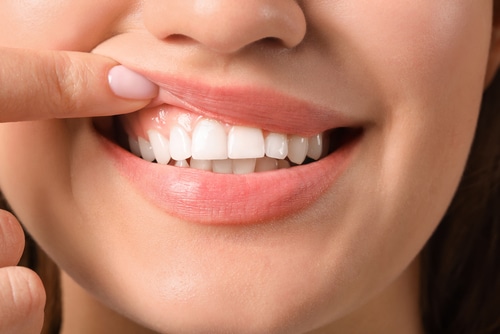Ever noticed your gums turning a bit red? Do you see bleeding gums when you brush your teeth? If yes, then it’s time to think more about gum disease. Close to half of all adults in the US have some form of gum disease, which is also the leading cause of tooth loss. It’s helpful to know the signs, symptoms, treatment options, and prevention methods of this very common, yet too often-overlooked health issue.
Bleeding Gums: An Early Warning
Bleeding gums can be the first sign that something is wrong with your oral health. Often, it’s an early indication of gum disease—and that isn’t a warning you should just “brush off.” When you see those traces of blood in the sink after brushing, it’s your body waving a caution flag, signaling you to pay attention. Just like you wouldn’t want to ignore a warning light on your car’s dashboard, ignoring these bodily warnings can cause further issues if left untreated.
Decoding Gum Disease
Also known as periodontal disease, gum disease starts as a silent enemy. It’s primarily caused by bad oral hygiene, which allows plaque to form on your teeth. Over time, this plaque hardens and turns into tartar, which can lead to inflammation and infection in the gums.
Spotting the Symptoms
The early stage of gum disease is called gingivitis. Symptoms might include:
- Red or swollen gums
- Bad breath that just won’t go away
- Gums pulling away from your teeth
- Loose teeth
If these issues aren’t addressed, they can escalate to periodontitis, a more severe form of gum disease.
Talking Treatment
If you’re thinking, “Oh, it’s just a bit of gum bleeding,” think again. Left untreated, gum disease can lead to tooth loss. But it’s not just about keeping a beautiful smile. Gum disease can also impact your overall health, as it is linked to conditions like heart disease and diabetes.
Early detection is key. If caught in the initial stages, gum disease can often be managed with a good oral hygiene routine and regular dental cleanings. But if things have progressed a bit more, you might need a deep cleaning, such as a debridement or scaling and root planing. These procedures help remove tartar and bacteria from the tooth surfaces and beneath the gums.
In more advanced cases, surgical treatments might be needed. But whatever the stage, there’s a solution. And the sooner you act, the better!
Preventing Bleeding Gums
So, how can you prevent gum disease? Here are some simple steps:
- Brush and floss daily: Make these your non-negotiable daily rituals.
- Regular dental check-ups: This helps catch issues early on, and lets you get answers to any questions from a dental professional.
- Eat right: A balanced diet does wonders for your oral health.
Remember, bleeding gums are more than just a minor inconvenience. They’re a sign that your mouth needs care and attention.
Help Your Bleeding Gums at Aspire Dental
Are you ready to tackle those bleeding gums head-on? We’re here to help. With the expertise of our dedicated team in Austin, TX, you’ll be in safe hands. Don’t wait to restore your oral health—schedule a consultation today and embark on your journey to a healthier, happier smile.
